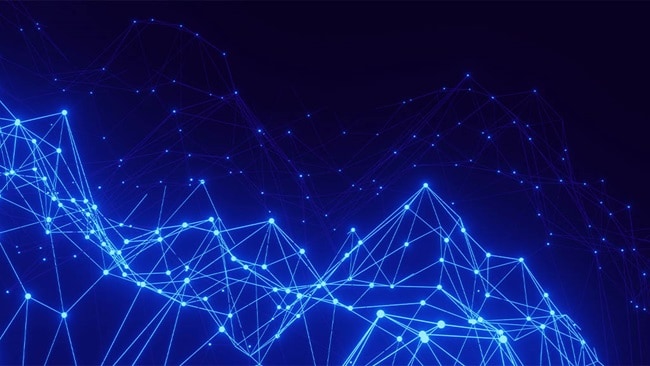When speaking about AI and customs, it is necessary to first understand the current landscape of customs clearance. How is it moving towards a higher digitalisation? How is this already benefitting businesses importing and exporting? When exploring the customs trends we will see this year, the wider use of digital software is more and more prominent, accompanied by a stronger need for visibility and the use of AI for customs.
Surely, for customs to become a strategic asset for any business, - and even being eventually boosted by AI - it is necessary that the data connected with a specific product and its movements is correct and, most importantly, is the same for everyone. Not an easy feat. But to work, it needs to follow universally accepted rules and standards.
AI and customs clearance- starting with data
In terms of data connected to customs, most people in the business are aware of the Harmonized System, but for those who don’t know – what it is exactly? And how is it related to customs and trade?
36 years ago, the World Customs Organization (WCO) established the “Harmonized Commodity Description and Coding System” also simply referred to as "Harmonized System” (or HS). As identified, the system, used by more than 200 countries and economies, is a multipurpose international product nomenclature developed as a universal language for international trade, where more than 5000 commodity groups are each identified by a six-digit code “arranged in a legal and logical structure and supported by well-defined rules to achieve uniform classification”. According to the WCO, “over 98% of the merchandise in international trade” is classified in HS terms.
The main value of the Harmonized System is trade facilitation. Every business that is trading internationally must classify the products that they are trading according to HS. Essentially, thanks to the HS, when goods are shipped across the world through countries with different languages and legislations, their trade can be harmonized using the same commodity descriptions and their corresponding digital codes. Easy right? But how does it work?
Why is the Harmonized System so important for customs data?
The classification of products is at the very centre of the whole customs operation's architecture. When using the WCO’s Harmonized System, every single commodity can be called in many ways using different languages, but it only corresponds to one specific 6-digit code - the same all over the world. The 6-digit code (e.g., 2509.00 for chalk, 0603.11 for fresh roses or 0405.10 for butter) identifies a specific commodity, under a specific product group that is described in the HS. At times, this can be complicated. For instance, some multipurpose products these days can be made with a collection of components and can have multiple functions (such as smartwatches), raising questions about their correct classification. These and other complex and controversial classification cases are regularly examined by the HS Committee at the WCO, which rules on how to proceed. However, most commonly traded items do not present any specific challenges in terms of their classification. Alexey Shcheglov, Product Lead Expert for Global Trade and Customs Consulting at Maersk, confirms that “even though there are many complexities in the HS, it is structured in such a way that most commodities that are traded internationally in large volumes can be rather easily found in the Harmonized System and HS-based tariffs by their users”, making it a great system to trade with ease.
Overall, Harmonized System codes are widely used by traders in commercial documents and are incorporated into commercial coding systems. The WCO recognises this practice and even recommends that a reference to the HS code is included in invoices to help exporters and importers make classification straightforward and uniform. Based on how a product is classified, traders will see what regulatory measures will need to be applied in a particular jurisdiction. These could, for example, be the kind of quotas applied to the product, any licencing required, how much duty it is necessary to pay, etc. For companies, importers, and exporters, it all starts by determining the classification of the goods that they move, because that defines if a product can enter a country or not, how much would it cost, and even if the whole process is viable for their business.
The multipurpose use of the HS for customs
The Harmonized System can be also used for other important purposes:
- Keep data accurate: It is very important that every business has well-trained people who understand the basics of the HS, while also ensuring that the customs data is accurate. This data can help businesses be more strategic when they create a new product (and then move it across borders), as all goods traded internationally must be classified to fit within one of the codes. The key is to well understand and follow the general rules of interpretation of the HS to navigate it, particularly in difficult classification cases. For most products, a business can identify the codes and the consequent related information by contacting customs brokers, the in-house logistics department, or by requesting help from integrated logistics providers that can offer support of customs consultants who have the skills and the competencies to navigate the tariffs and the Harmonized System.
- Identify crucial trade-related information: In this international, well-structured, and organised system of product descriptions and numerical codes, global trade is facilitated and so are its correlated regulations and statistics. Depending on how a product is classified, various restrictions (e.g., if a product is illegal in a certain country) may apply, or countervailing duties, or other kinds of economic measures, customs sanctions and tariffs related to it that might be restrictive to a business’s geographical growth. As an example, in some countries, alcohol may be not allowed for import, but it is certainly allowed in most others. For this reason, the commodity code will provide crucial trade-related information, which is of particular importance for small or medium companies approaching trade for the first time.
- Monitor global trade: The multipurpose character of the HS also allows for better identification of data around a commodity’s movement, therefore creating accurate and relevant statistics on that specific supply chain. An example of this can be the use of the Harmonized System as a basis to regulate and monitor the trade in prohibited or subject-to-restriction products (e.g., psychotropic products, ozone-depleting substances, or other dangerous goods such as mercury or asbestos).
- Reveal hidden opportunities: Many countries have advanced ruling systems, also called binding tariff information or pre-entry classification information programmes. These systems open a possibility for traders to contact the customs authority in the country of destination and request them to issue a ruling regarding the classification of the products to be imported. Such rulings are binding for the issuing authority, and so traders have full certainty about how their products will be treated in the country of importation. By using advanced rulings, a business will determine what “treatment” they can expect for their products when they enter a given country and, most importantly, calculate the necessary duties knowing the commodity tariff code. “This approach can increase the predictability and certainty of imports and exports, ultimately shaping the supply chain strategies of companies, for example, import at a much lower duty rate, if applicable” says William Petty, Global Product Development Manager within Global Trade & Customs Consulting at Maersk. Hidden opportunities can be found in customs, opening, or closing some markets for specific products. These differences might appear subtle, but they can make a big difference for a business, particularly on cost, and they can be applied upstream, even when businesses are still designing their products.
In summary, the Harmonized System is important for customs and global trade because it:
- Creates a common language for all traders, globally.
- Harmonizes data related to trade.
- Helps identify possible restrictions.
- Ensures valuable inputs for any trade-related statistics.
- Supports with identifying supply chain opportunities.
Artificial intelligence for customs
For the Harmonized System to act as a great data language and help businesses, it must be continuously updated and adjusted to the needs of trade. Moreover, as the world changes and technology follows, customs clearance systems are being reviewed to solve new problems that arise.
Today, all businesses are being influenced by automation and gearing up to be boosted by AI, with almost no industry remaining untouched. How will AI power the streamlining and automating of data for commodity classification and customs? If well managed and applied, AI can help by accelerating the process of producing an HS code providing a quick search for information that is relevant to this commodity, e.g.: new market opportunities, but most importantly it helps boost the accuracy and consistency of data. It is not just about being quick, but it is about being accurate – and automation, driven by artificial intelligence and machine learning, can help with keeping customs data and documentation correct, achieving the necessary consistency and uniformity.
Note: this article has been completely written by a human.
Click here to see part 2 on how AI, automation and machine learning can revolutionise customs.
Sign up to The Logistics Pulse newsletter
You did it, welcome onboard!
We're sorry, but there was a problem sending your contact request.
Please review the form fields and ensure all required information is provided correctly. If the issue persists, please contact our support team for further assistance.
Sign up to The Logistics Pulse newsletter
Receive our insights directly in your mailbox by signing up through this form and enter a world of truly integrated logistics. Get inspired by our selection of articles that help you navigate supply chains, understand industry trends, and shape your logistics strategy. You can unsubscribe anytime.
I agree to receive logistics related news and marketing updates by email, phone, messaging services (e.g. WhatsApp) and other digital platforms, including but not limited to social media (e.g., LinkedIn) from A. P. Moller-Maersk and its affiliated companies (see latest company overview). I understand that I can opt out of such Maersk communications at any time by clicking the unsubscribe link. To see how we use your personal data, please read our Privacy Notification.
By completing this form, you confirm that you agree to the use of your personal data by Maersk as described in our Privacy Notification.













